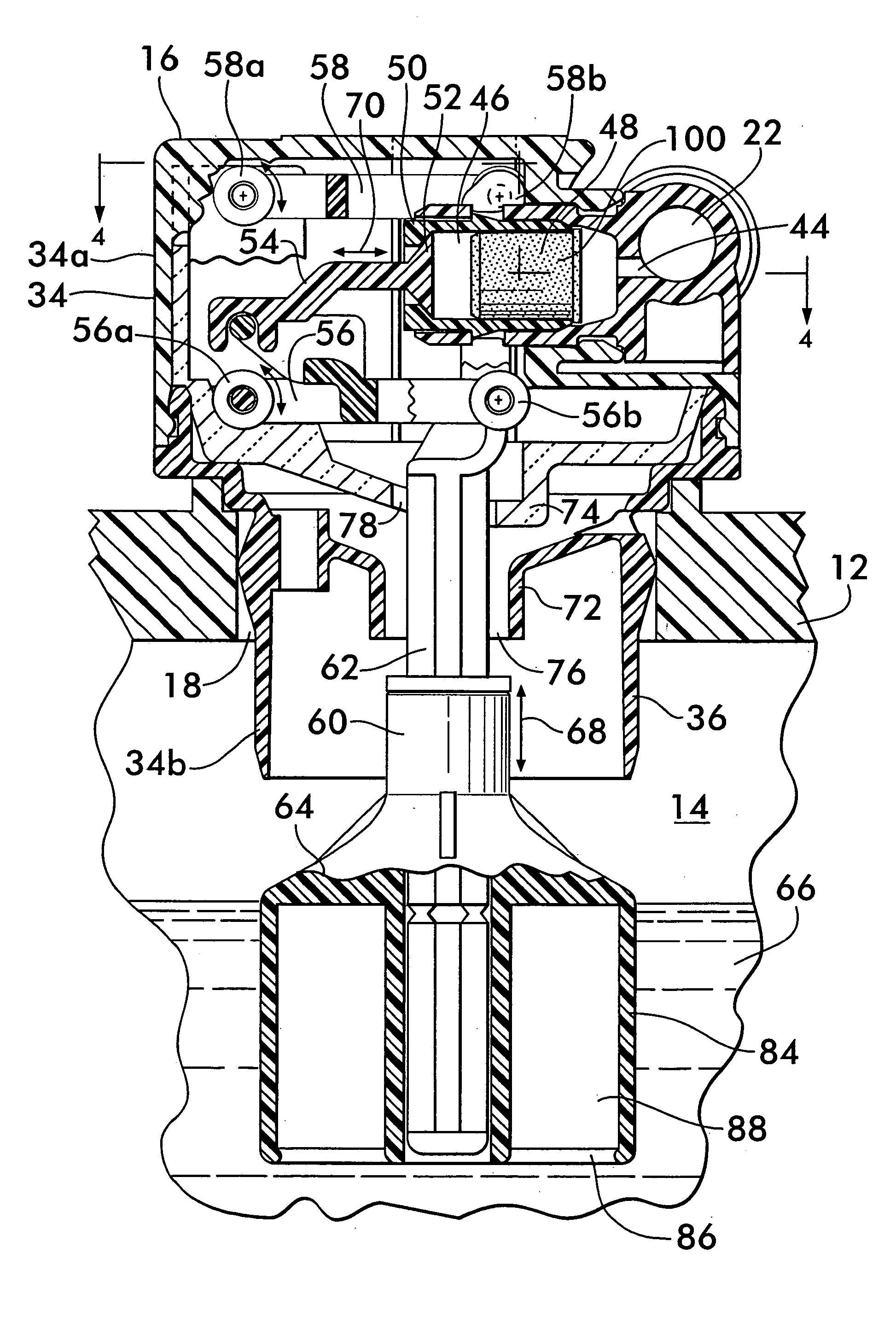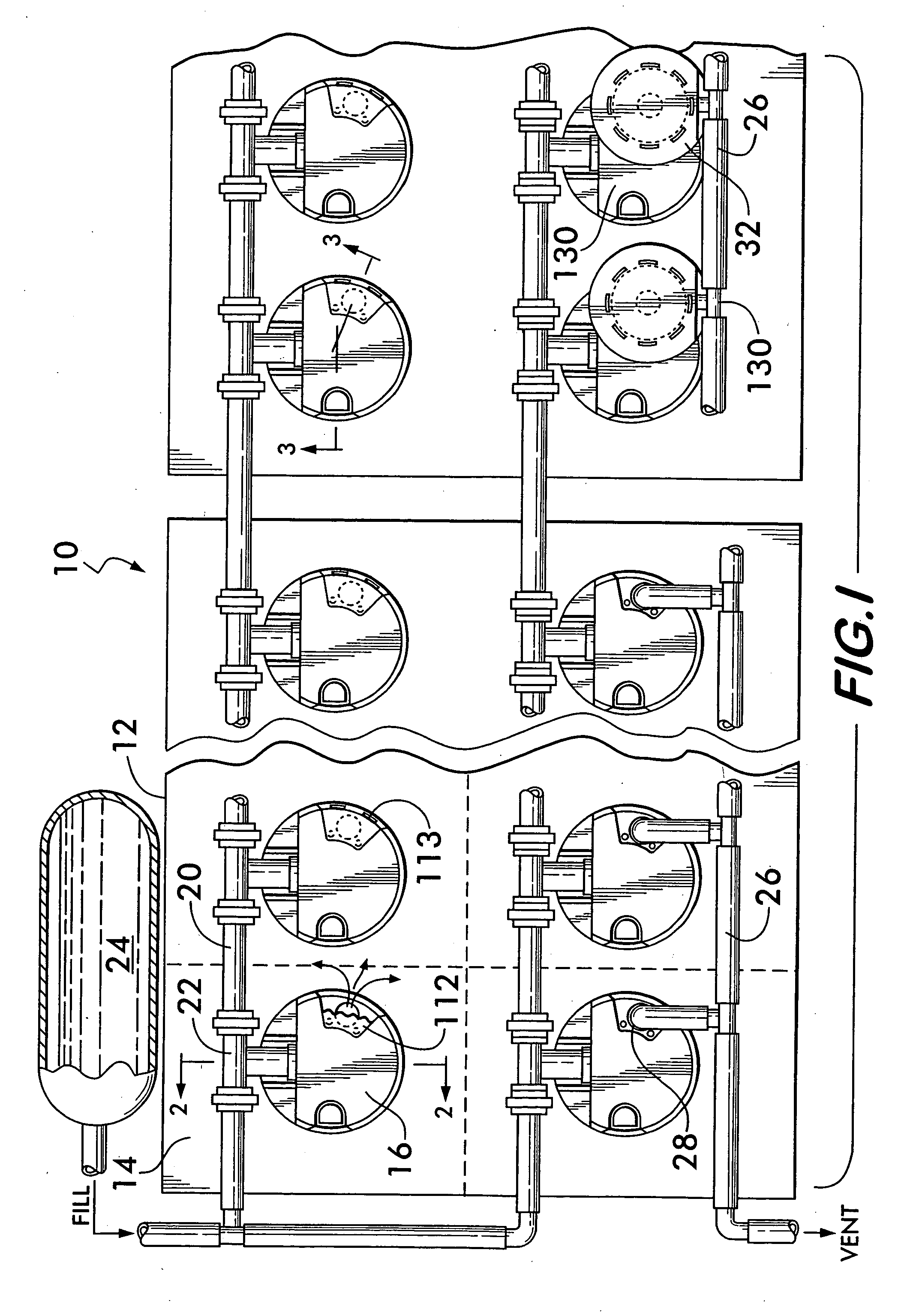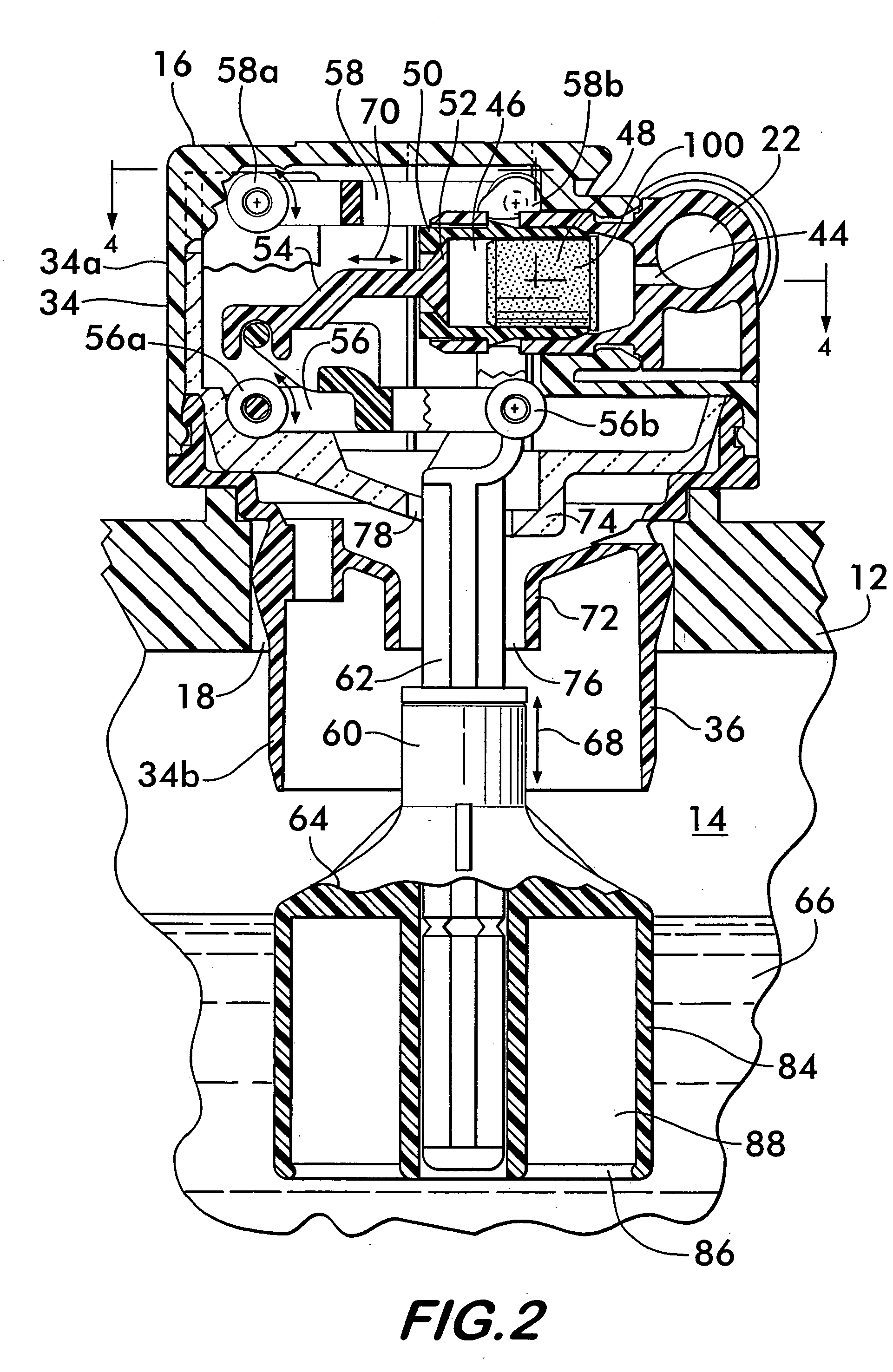Float valve assembly for battery
a technology of float valve and battery, which is applied in the direction of cell components, cell component details, secondary cell servicing/maintenance, etc., can solve the problems of prone to stick or jam, mechanism that links the float to the valve, and loss of water from the electrolyte solution
- Summary
- Abstract
- Description
- Claims
- Application Information
AI Technical Summary
Benefits of technology
Problems solved by technology
Method used
Image
Examples
Embodiment Construction
[0020]FIG. 1 shows an aqueous electrolyte battery 10 comprising a casing 12 divided into a plurality of cells 14, each cell having its own float valve assembly 16 sealingly engaged with a vent opening 18 in the cell (see also FIG. 2). Float valves 16 are connected in series to one another by a fluid conduit 20 that engages tee fittings 22 on each float valve. The conduit 20 is connectable to a water source 24 which provides water to replenish electrolyte lost from the cells during charging. During water replenishment, each float valve 16 controls the flow of water to its associated cell as described below. The float valves may also be connected to a gas conduit 26 in fluid communication with a gas discharge outlet 28 on each float valve. The gas discharge outlet allows oxygen and hydrogen gas, generated by electrolysis during charging, to vent from the cells. The gas conduit 26 conducts the gas away to be discharged to the ambient remotely from the cells 14. A flash arrester 32, des...
PUM
| Property | Measurement | Unit |
|---|---|---|
| movement | aaaaa | aaaaa |
| flexible | aaaaa | aaaaa |
| sizes | aaaaa | aaaaa |
Abstract
Description
Claims
Application Information
 Login to View More
Login to View More - R&D
- Intellectual Property
- Life Sciences
- Materials
- Tech Scout
- Unparalleled Data Quality
- Higher Quality Content
- 60% Fewer Hallucinations
Browse by: Latest US Patents, China's latest patents, Technical Efficacy Thesaurus, Application Domain, Technology Topic, Popular Technical Reports.
© 2025 PatSnap. All rights reserved.Legal|Privacy policy|Modern Slavery Act Transparency Statement|Sitemap|About US| Contact US: help@patsnap.com



